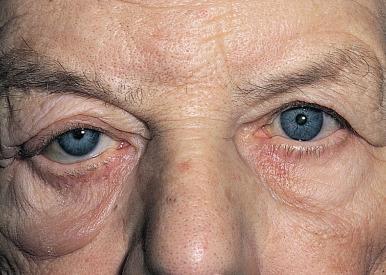Physical Address
304 North Cardinal St.
Dorchester Center, MA 02124
In this chapter many of the techniques of examination used in ophthalmic plastic surgery are described.
After taking an accurate history it is helpful to approach the examination in a methodical way. The relative importance of each test varies with the condition being assessed and this is discussed in later chapters.
Check the visual acuity.
Look for scars, inflammation, tumours, lid malpositions and any other obvious abnormality of the eyelids and face. Record accurately the size and site of any skin lesions and any attachment to deeper structures.
With the patient's eyes open look for ptosis or lid retraction, entropion, ectropion, telecanthus and rounding or medial displacement of the lateral canthus.
The margin–reflex distance (MRD) allows an accurate assessment of the relative positions of each of the four eyelids. It provides more information than simple measurement of the vertical palpebral apertures (between the upper and lower lids) because an inaccurate record of the position of the upper lids occurs if the lower lids are not level with each other. The MRD reveals this.

The normal intercanthal distance is approximately half the interpupillary distance (see Table 1.1 ). In simple telecanthus the orbits are in a normal position. It should be distinguished from hypertelorism in which the orbits are more widely spaced than normal. The intercanthal distance may be altered following traumatic rupture of the medial canthal tendon, or in some congenital conditions, for example blepharophimosis (see Figs 9.7 pre B , 18.1 pre ).
Check that the lids open and close normally and move normally in upgaze and downgaze. Assess levator function ( 3.3 ), the power of the orbicularis oculi and frontalis muscles and Bell's phenomenon ( 3.5 ). In isolated congenital ptosis and other myogenic causes of ptosis the upper lid hangs up in downgaze ( 3.3e,g ). In levator aponeurosis dehiscence, an acquired ptosis, the upper lid drops in downgaze ( 3.3h,j ). Look for jaw-winking ( 3.6 ).
This may be present with no clinical abnormality. The downward excursion of the lower lid in downgaze may be reduced and the tarsal plate, having lost its inferior attachment, may rotate inwards or outwards. If the lower lid retractors are very lax or detached the lower conjunctival fornix may be noticeably deeper than normal.
Become a Clinical Tree membership for Full access and enjoy Unlimited articles
If you are a member. Log in here